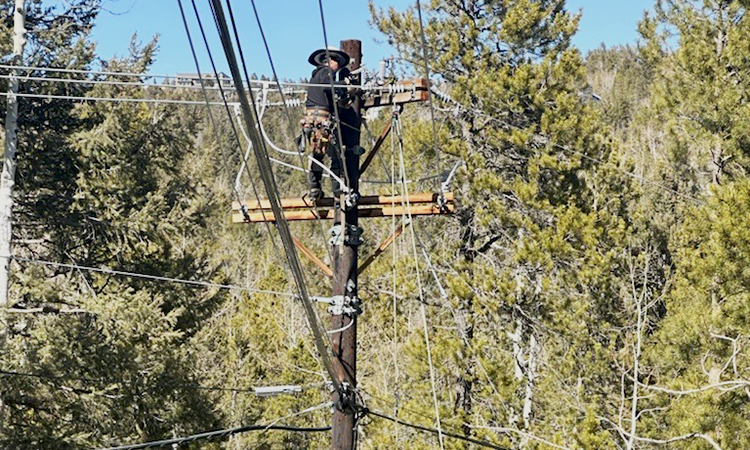
16 Apr
Colorado received record-breaking winds beginning on April 5 lasting through the majority of the weekend that caused many broken poles and trees on lines. As a result, we want to share our initial takeaways regarding extreme wind related outages.
First of all: If you experienced an outage, thank you for your patience during this unprecedented weather event. We especially appreciate the patience of members who were without service for extended periods. We understand how difficult and frustrating even a short outage can be, which is why our dedicated line workers and other field personnel worked so hard – and through very challenging conditions – to restore service as quickly as possible.
As your member-owned, not-for-profit electric cooperative, we always focus on providing reliable power at affordable rates. Thanks to continued improvements to and increased maintenance of our grid, most of CORE’s 5,000-square-mile service area had very few or no outages. The bulk of the extended outages were concentrated in our mountain and foothill communities. Our crews worked tirelessly – many of them through the night – to get affected members back on, and we enlisted the help of contract powerline construction and tree removal crews to speed up restoration efforts. We want to recognize all of the men and women who worked so diligently in these potentially unsafe conditions to restore power to our communities.
Our grid performed well, and our crews worked very hard, but this weekend’s storm illustrated some things CORE can continue to refine, improve and build on going forward.
This includes estimated times of restoration (ETRs). Some members received fluctuating ETRs for their power outages. We rely partly on automatically generated ETRs that don’t always match our crews’ direct assessments in major events such as this. The nature and scope of restoration work is much more varied in an event like this and can change by the minute. We will reevaluate our ETR process so that we can provide more consistent and accurate information in the future.
We also want to be clear about the alternate relay settings we activated across our system ahead of this weekend’s extreme winds and during high fire danger. CORE’s alternate relay settings do not preemptively turn off any part of our system; they instead make the system more sensitive to potential issues, such as a tree on a line. This increased sensitivity occasionally results in larger and longer outages. The tradeoff is that these outages help us quickly identify potential hazards and prevent wildfires. The alternate relay settings performed as expected and the equipment de-energized lines as trees fell onto them before fires could be started. You can learn more about our alternate relay settings and how they differ from planned outages here. Additionally, CORE continues to deploy equipment that will minimize the size of some outages in the future. You can learn more about our wildfire mitigation efforts on this page.
Our operations and other departments will look closely at these and other parts of our outage response so that we will be even more prepared to reliably deliver The Energy to Thrive during future adverse weather events.